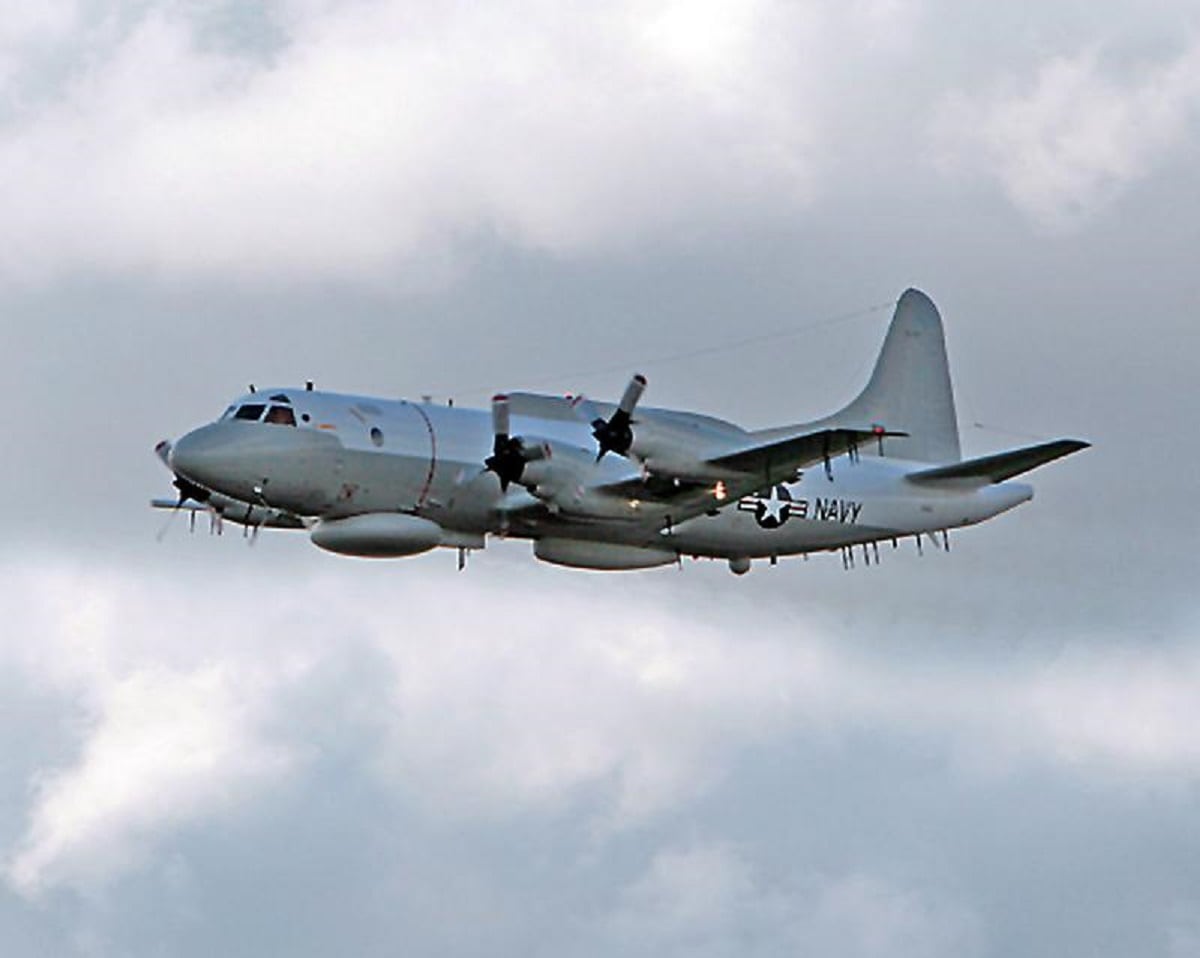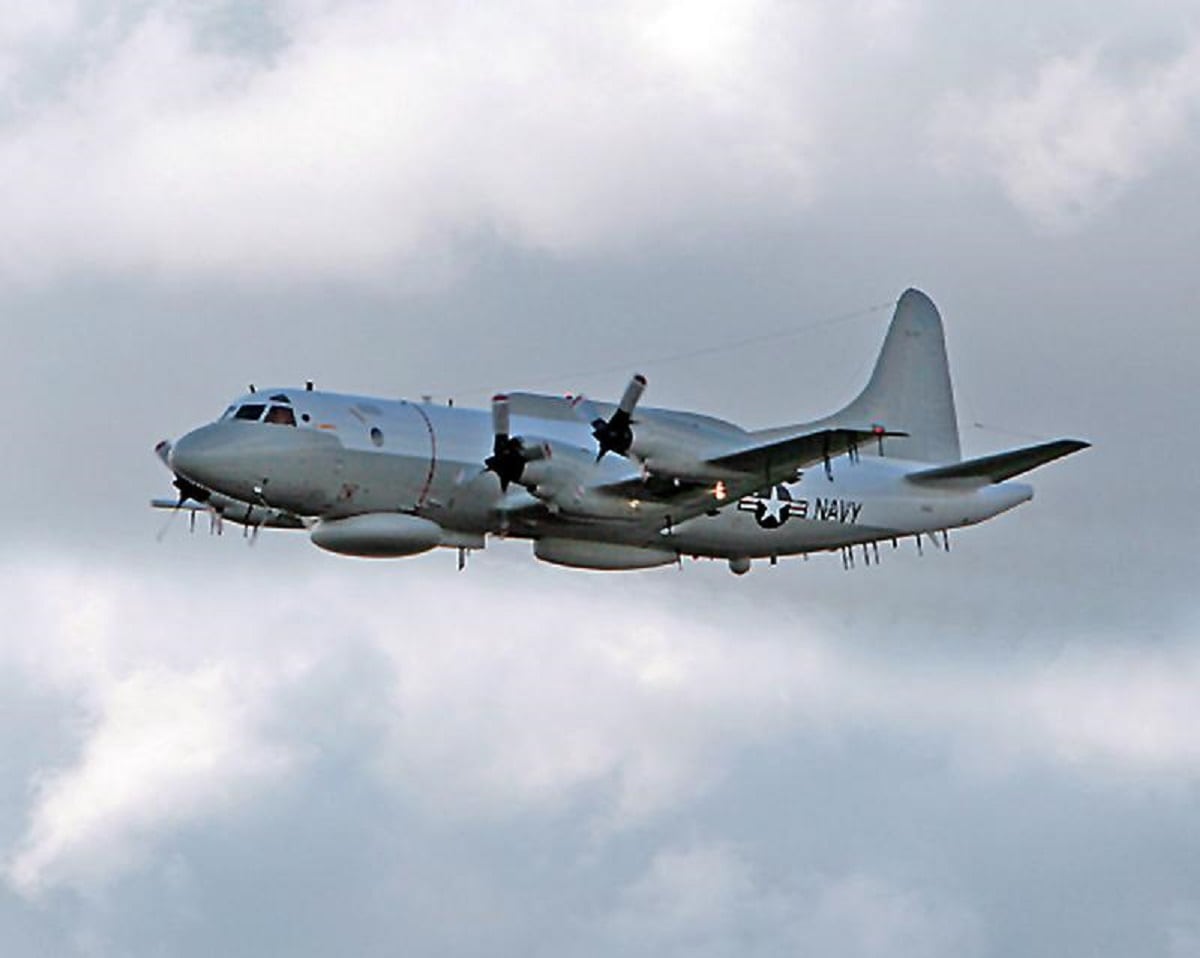This week saw a Russian fighter jet zoom dangerously close to a U.S. Navy reconnaissance plane over the Black Sea, the second publicized interdiction this year.
Video released by the Navy shows the Sukhoi Su-27 Flanker on the EP-3 Aries II aircraft’s starboard side during what the Navy said was a routine Monday mission in international airspace.
The Russian pilot then banks right and hits the afterburners, forcing the Greece-based Navy crew to fly through the turbulent wash.
While these encounters can turn harrowing for the sailors inside the planes, the intercepts also mark a return to Cold War behavior over the skies of Eastern Europe, experts told Navy Times.
Some analysts warn the Russians have been getting too close, raising the specter that the aerial interdiction flights could trigger fatalities and larger conflict.
RELATED

Military officials declined to provide a tally of Russian intercept incidents in Europe for recent years, but said the last unsafe encounter happened in January, when an Su-27 flew just five feet away from another Navy signals surveillance aircraft.
“We had intercepts quite often” before the Soviet Union fell, said Jerry Hendrix, a retired naval flight officer who served on similar planes and recalled his own Russian intercept over the Mediterranean Sea decades ago.
These sorts of interactions are supposed to be guided by the 1972 Agreement for the Prevention of of Incidents On and Over the High Seas, or INCSEA.
INCSEA was designed to tamp down Cold War tensions by preventing potentially cataclysmic confrontations between the great powers that could spiral into World War III.
It was boosted by a 1989 pact, the Agreement on the Prevention of Dangerous Military Activities. Both deals were reaffirmed by the Russian Federation in 1998.
“We recognized that, yes, there is going to be a requirement that if we come by areas of interest to the Russians, they’re going to come intercept us,” said Hendrix, who retired as a captain in 2014 and now works as a national security consultant. “If they come and fly along the American East or West Coast or the Arctic realm, we’re going to do interceptions.”
But Hendrix said Monday’s interception and January’s near miss indicate a less strenuous Russian adherence to the terms of the formal agreements.
“I watched that video and I’m like, ‘Oh jeez, he’s way too close. He’s swinging too far in front and banking,’” Hendrix said. “There’s a mixture of some bad chemicals there that could cause a reaction.”
Worst case scenario, he said, the Russian pilot “passes in front, goes to afterburner in front of the nose of an older airplane and causes one of the engines on that turboprop to flame out," triggering “some sort of mechanical failure because they acted aggressively.”
"If there’s a loss of an aircraft, a loss of life on either side, we’re beyond a diplomatic incident,” Hendrix added.
Flying through those sorts of pressure waves is “not a pleasant situation,” he said, and the Russian Flanker fighter is likely piloted by a young aviator “and they’re going to make mistakes.”
“Testosterone gets in the way of good judgment,” he said.
RELATED

Russian aggression in the air is transpiring in the wake of Moscow’s 2014 annexation of Ukraine’s Crimean Peninsula, which juts into the Black Sea.
Russia’s occupation sparked an increasing number of American warships and aircraft patrolling there and the Baltic Sea that rims northern Europe, according to Mark Cancian, a senior adviser at the Center for Strategic and International Studies’ International Security Program.
“We are poking into seas that are close to Russian territory,” he said. “This is the equivalent of the Caribbean for them, so they react.”
Cancian, a retired Marine Corps colonel, said this years intercepts are on the cusp of violating established norms. He contrasted the latest events to a 2001 incident, when a Chinese jet interdicted a Navy EP-3E Aries II about 50 miles southeast of Hainan Island.
The fighter pilot "flipped up over on top, and was really hot dogging, and then lost control and collided,” forcing the Aries to make an emergency landing in China, Cancian said.
“It killed the Chinese pilot,” he said. “That’s what you want to avoid.”
To Cancian, the increasingly bold Russian flights aren’t a harbinger of Russian armor storming into Western Europe. Instead, he sees it more as a reaction to a persistent American presence in Moscow’s backyard.
“There are two sides here,” Cancian said. “We’re being more aggressive and then they’re being more aggressive in intercepting us. If one side gets outside the agreement, then that is dangerous.”
Geoff is the managing editor of Military Times, but he still loves writing stories. He covered Iraq and Afghanistan extensively and was a reporter at the Chicago Tribune. He welcomes any and all kinds of tips at geoffz@militarytimes.com.




